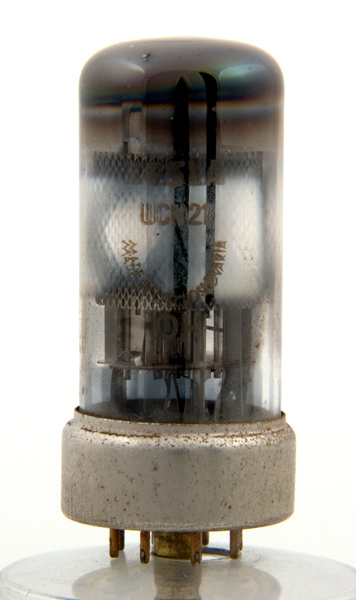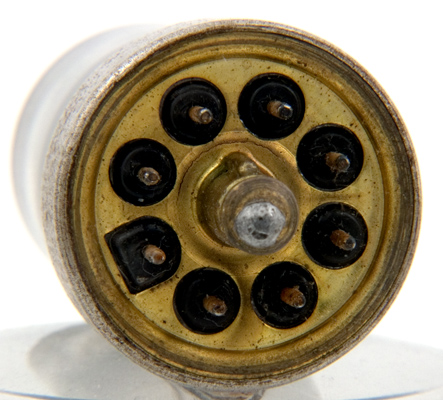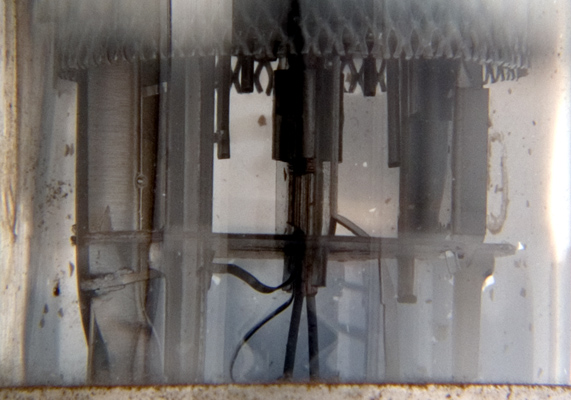
|
The UCH21 is an early example of all glass construction. This triode heptode frequency changer was designed to operate on a heater chain across the mains supply, and the anode voltage is correspondingly low to take account of the low HT voltage present in universal sets. Mullard describe the valve as designed to accept ACG to the heptode.The reason why there is no cathode/g5/s pin is that the metal spigot is used for this purpose. This meant that the metal skirt operated at cathode potential, not chassis potential, creating insulation problems unless a suitably-insulated base socket was used. It also creates problems with some commercial valve testers.
The B8B Loctal base has an almost square moulding in the glass base to locate the metal skirt.
The heptode electrode construction is obscured by the shielding screen. The triode section, visible below the screen, is required to generate a peak to peak voltage of 13 Volts to drive the mixer correctly.The wide glass tube envelope is 27.3 mm in diameter, and excluding the B8B base pins, is 64 mm tall.References: Data-sheet & 3002. Type UCH21 was first introduced in 1941. See also 1941 adverts. |
Pin Connections
| 1 | 2 | 3 | 4 | 5 | 6 | 7 | 8 |  h | a | a(t) | g(t) | g2,g4 | g1 | g3 | h |
|
|
Absolute Maximum Operating Conditions¶
| Vh | Ah | Va | Vs | Vg | mAa | mAs | ra | gm | 
| 20.0 | 0.1 | 200 | 100 | -2 | 3.5 | 6.5 | 1M | 0.75 |
|
Absolute Maximum Operating Conditions¶
| Va | mAa | 
| 120 | 4.1 |
|
Updated February 07, 2013.
|
|